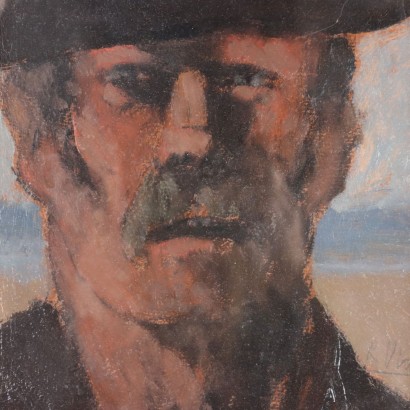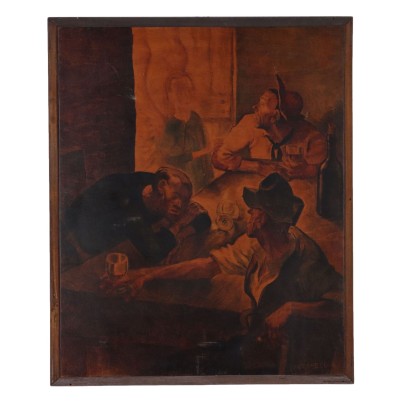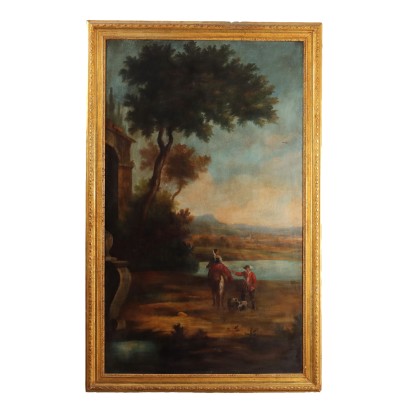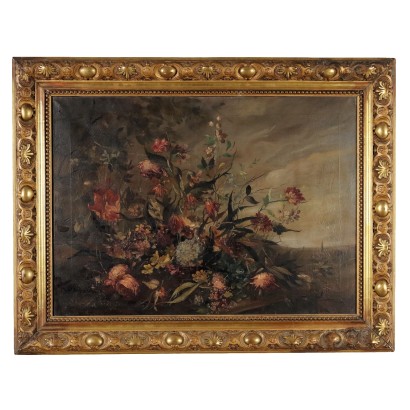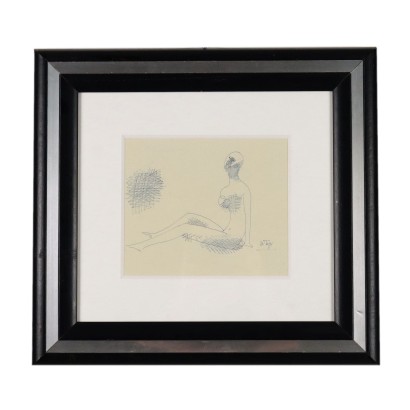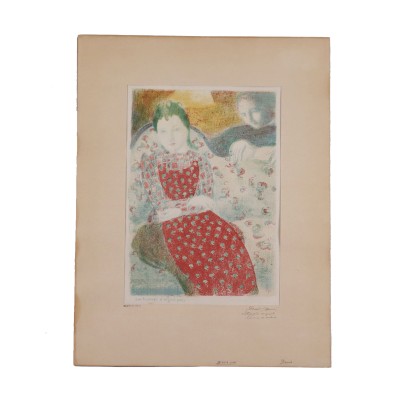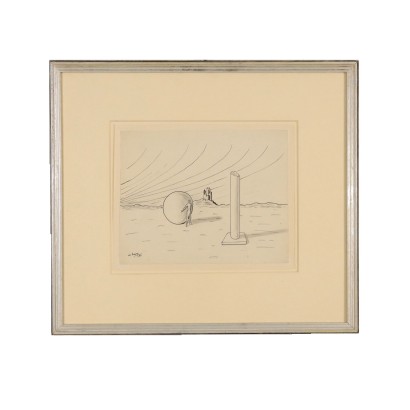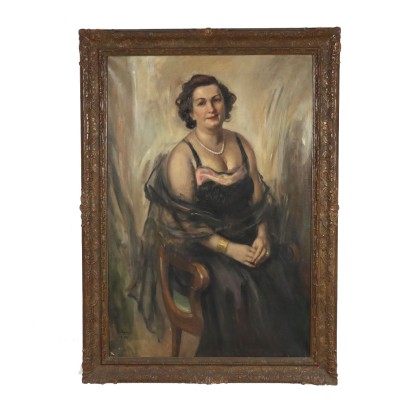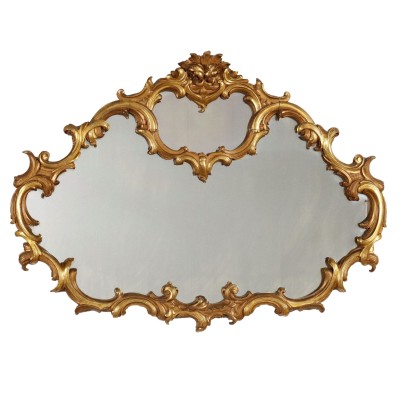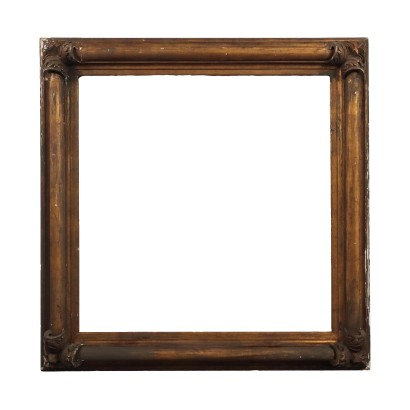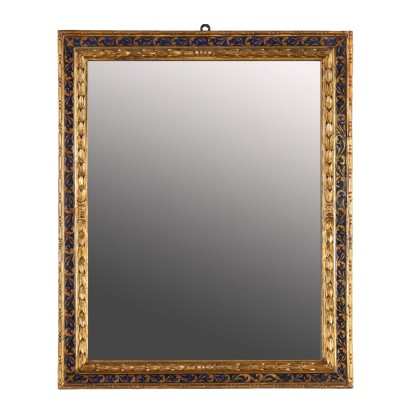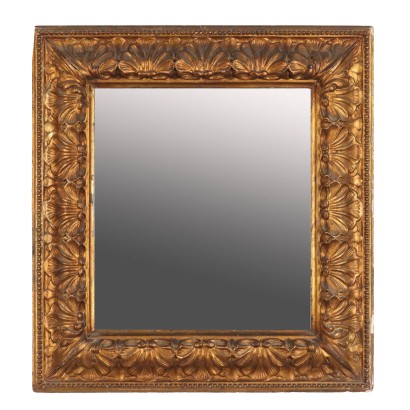Modern Painting by Lorenzio Viani Man's Face Mixed Technique '900 - Man's Face
Features
Man's Face
Artist: Lorenzo Viani (1882-1936)
Artwork title: Faccia d'uomo
Age: 20th Century / 1901 - 2000
Subject: Portrait/Face
Artistic technique: Painting
Technical specification: Mixed Technique
Description : Faccia d'uomo
Mixed media on cardboard. Signed lower right. On the back there is a cartouche with the title. An original exponent of European Expressionism, Lorenzo Viani was always attracted to the poorest and most derelict, both in his childhood and in his maturity, going so far as to transfer their lives and their human experiences onto the canvas. There are numerous faces of these characters who are rendered with strong chromatic impressions and with a decisive and fast brushstroke, an intense, expressive and at times extremely melancholic painting. The work is presented in a frame.
Product Condition:
Product in good condition, has small signs of wear. We try to present the real state as fully as possible with photos. If some details are not clear from the photos, what is stated in the description applies.
Frame Size (cm):
Height: 51
Width: 40
Depth: 4,5
Artwork dimensions (cm):
Height: 31,5
Width: 21,5
Additional Information
Artist: Lorenzo Viani (1882-1936)
Born in Viareggio in 1882, Lorenzo Viani began his career as a painter after a chance meeting with the painter Plinio Nomellini: with his help in 1900 he entered the Institute of Fine Arts in Lucca where he remained for three years. In 1901 he met Giovanni Fattori in Florence who, noticing the "good errors" in his drawings, that is, that tendency towards expressive deformation, encouraged him to continue in art. In 1904 he began attending lessons at the Florentine Academy of Fine Arts, alternating lessons from the elderly master from Livorno, with visits to the museums and churches of Florence, admiring, above all, Tuscan primitives. During the summer he moved to Torre del Lago, initially to Nomellini's studio and then to his first atelier in front of Giacomo Puccini's villa. The debut dates back to 1904 with five drawings presented to the Promotrice Fiorentina, followed by participation in the 1st Tuscan Art Exhibition in Florence and a solo show at the Regio Casino in Viareggio. In this period, alongside the works of the Fattoriano style, he created others different in tone and subject, which already highlighted the markedly personal stamp: Rebellion, The Stage, Return, The Wall. In 1907 he participated in the Venice Biennale. A brief experience in Genoa was followed by his first trip to Paris in 1908. Despite the hardships caused by being away from home, the hunger and the cold suffered in the Ruche, a building hosting derelict artists of all nationalities, he works intensely portraying characters that strike his imagination. Between 1911 and 1915 his activity intensifies and to the profession of painter he adds that of journalist, politician and writer. Returning to Viareggio, he took the rooms of the local Chamber of Labor as his studio and it was here that he became friends with Ceccardo Ceccardi. His second stay in Paris (1911-1912) marks his decisive artistic maturation, in which references to the works of the great artists Cézanne and Van Gogh coexist with the colors and shapes of the Tuscan fourteenth century. Struck by his great talent, the sculptor Leonardo Bistolfi organized a solo show in Milan in November 1915, an exhibition which, with over 600 works, made him known on an international level. With the outbreak of war, he leaves for the front. In July 1923 he returned to Viareggio and began to compose one of his most famous autobiographical writings, Paris, published in 1925. The following year he moved to Lido di Camaiore where he remained until 1930. He painted the "Paris Collection" cycle, in which he recalled the characters from his experience in the French capital, and designed the Viareggio War Memorial with Domenico Rambelli. The increasingly insistent asthma forced him to leave home in 1933 and retire to Nozzano, studying patients in the nearby Maggiano mental hospital. Without any pause the painter draws and paints the drama of the internees in works that will be exhibited at the solo exhibition held in Viareggio in 1934. He obtained his last demanding commission on 6 October 1936: the fresco of the “IV Novembre” College of the Sailors' Orphans of Ostia. Viani worked there intensely but was surprised by a violent asthma attack which caused his death in 1936.Age: 20th Century / 1901 - 2000
20th Century / 1901 - 2000Subject: Portrait/Face
Artistic technique: Painting
La pittura è l'arte che consiste nell'applicare dei pigmenti a un supporto come la carta, la tela, la seta, la ceramica, il legno, il vetro o un muro. Essendo i pigmenti essenzialmente solidi, è necessario utilizzare un legante, che li porti a uno stadio liquido, più fluido o più denso, e un collante, che permetta l'adesione duratura al supporto. Chi dipinge è detto pittore o pittrice. Il risultato è un'immagine che, a seconda delle intenzioni dell'autore, esprime la sua percezione del mondo o una libera associazione di forme o un qualsiasi altro significato, a seconda della sua creatività, del suo gusto estetico e di quello della società di cui fa parte.Technical specification: Mixed Technique
Other customers have searched:
Arte Novecento, dipinti del 900, olio su tavola, pittura olio su tela, arte 800, pittura antica, arte contemporanea, quadro del '900, quadro grande, quadro olio su tela..
Se sei un appassionato d'arte, non perderti i nostri approfondimenti sul Blog Arte Di Mano in Mano e su FineArt by Di Mano in Mano - Arte:
Leggi di più
Ecco alcuni tra i principali articoli:
Vedute
Falsi nell'arte antica
Un messaggio di fiducia per ripartire
La potenza espressiva dell'arte figurativa etiope
Breve Storia del Collezionismo
Giorgio Upiglio, maestro dei libri d'artista
Matthias Withoos detto "Calzetta bianca"
San Rocco pensaci tu - Classic Monday
Ecco alcuni esempi dell'arte del Novecento più bella che puoi trovare da noi:
I Raccoglitori di patate - Lavoro estivo - Augusto Colombo, 1935
I Taglialegna - Lavoro invernale - Augusto Colombo, 1933
Il lavoro femminile, Contardo Barbieri, 1954 ca.
Sapevi che l'arte può essere anche un ottimo investimento (e non solo per grandi portafogli)?
L'Arte tra Collezionismo e Investimento
FineArt: Arte come investimento
Dai un'occhiata alle nostre rubriche di divulgazione sull'arte:
Epoche
Lavorazioni e tecniche
Mostre ed Eventi
Protagonisti
Leggi di più
Ecco alcuni tra i principali articoli:Vedute
Falsi nell'arte antica
Un messaggio di fiducia per ripartire
La potenza espressiva dell'arte figurativa etiope
Breve Storia del Collezionismo
Giorgio Upiglio, maestro dei libri d'artista
Matthias Withoos detto "Calzetta bianca"
San Rocco pensaci tu - Classic Monday
Ecco alcuni esempi dell'arte del Novecento più bella che puoi trovare da noi:
I Raccoglitori di patate - Lavoro estivo - Augusto Colombo, 1935
I Taglialegna - Lavoro invernale - Augusto Colombo, 1933
Il lavoro femminile, Contardo Barbieri, 1954 ca.
Sapevi che l'arte può essere anche un ottimo investimento (e non solo per grandi portafogli)?
L'Arte tra Collezionismo e Investimento
FineArt: Arte come investimento
Dai un'occhiata alle nostre rubriche di divulgazione sull'arte:
Epoche
Lavorazioni e tecniche
Mostre ed Eventi
Protagonisti





